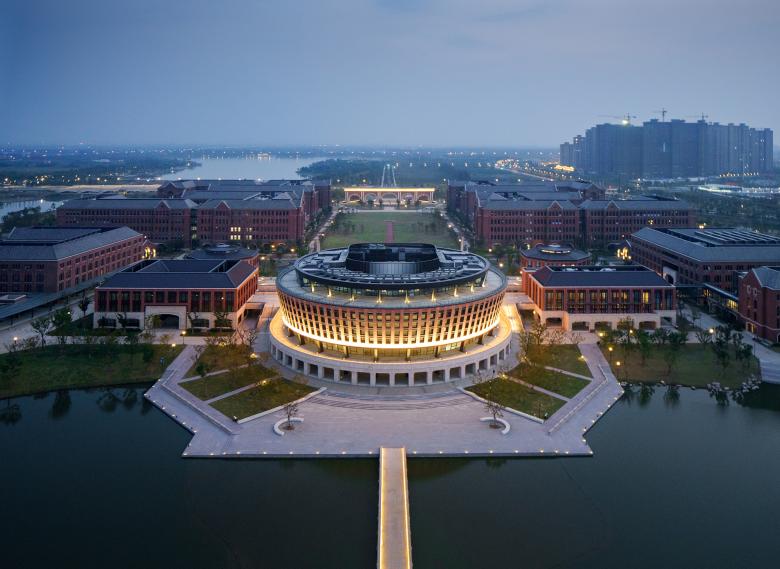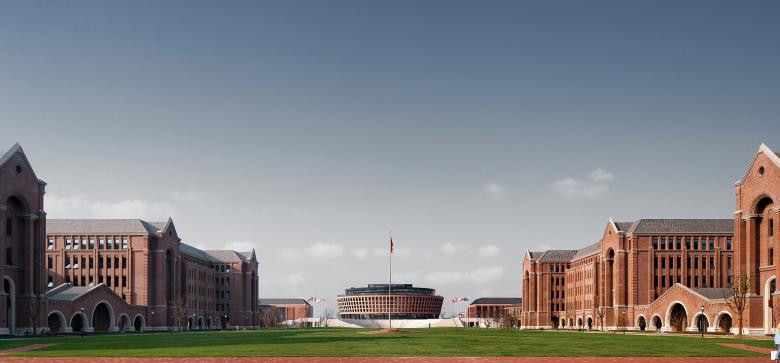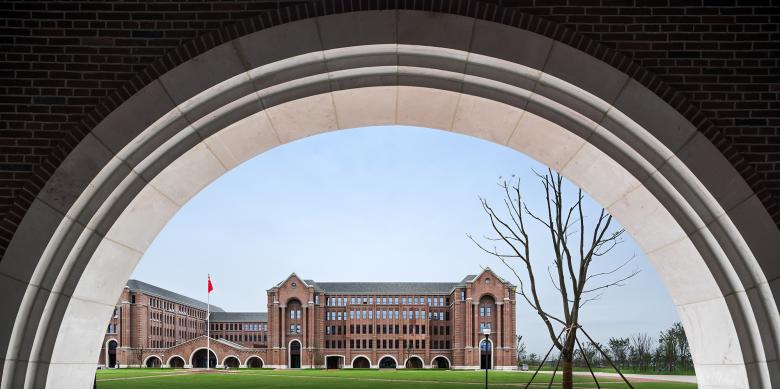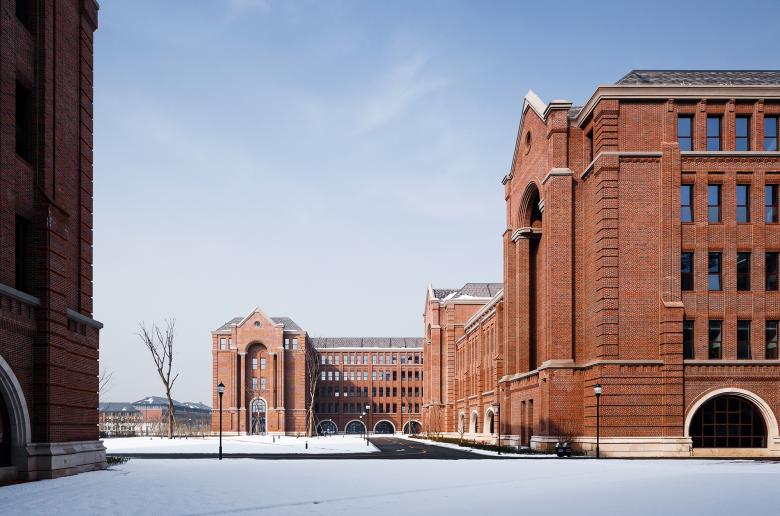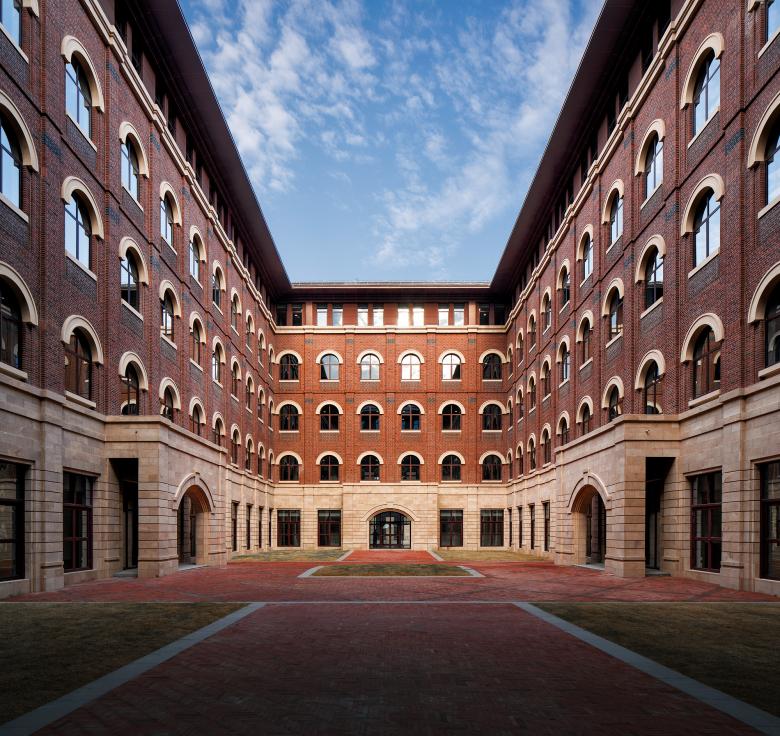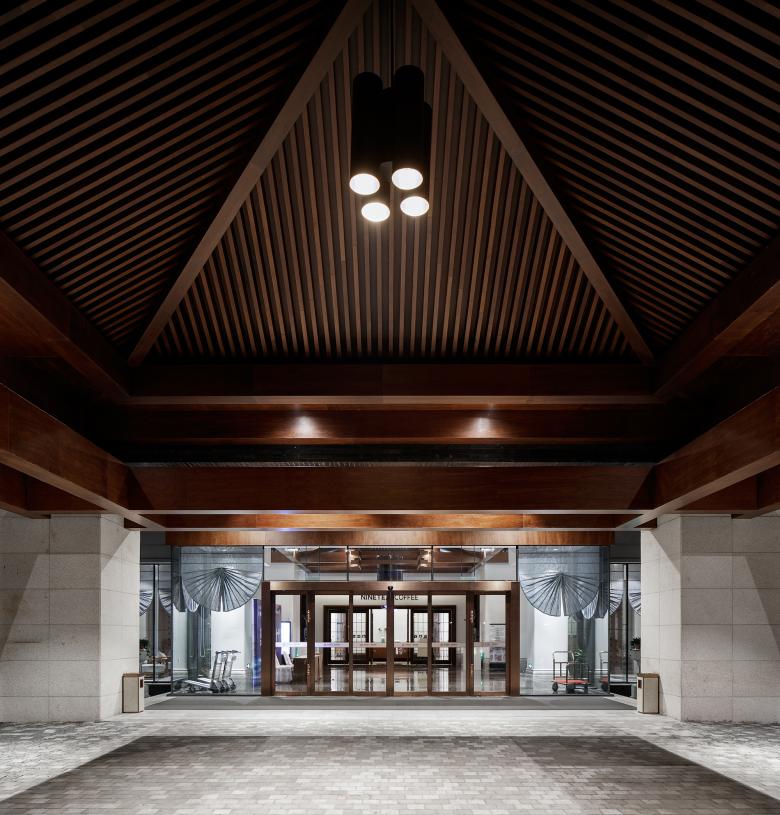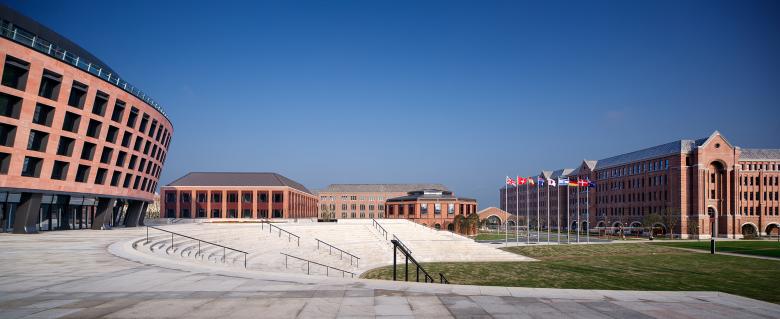International Campus of Zhejiang University
Ninghai, China
In the era of globalization where cross-border flow of educational resources has become the norm, Zhejiang University has proposed a strategic concept for the construction of an international campus. The project is located at the Juanhu Lake International Science Park, east of Haining City, Zhejiang Province. To its south is the Juanhu Lake which covers an area of 1,300 mu, and to its north is the Wetland Park. River channels run along the east and west side, forming a natural shield around the site.
The campus planning breaks away from the conventional planning model with functional zones as the key, adopts the British-style "residential college" as the basic framework and establishes a functional structure of "college + teaching and service complex + public scientific research platform", proposing a multi-functional model.
The Campus enjoys a neo-classical style in general, with each group changing slightly, either dignified and rational, or elegant and casual, or even modern and minimalist. It is diverse yet inclusive, and not only reflects the historical depth of internationalization, but also expresses the self-confidence and sense of belonging of Zhejiang University's own culture.
Fair-faced red bricks were used as the main materials for the building's exterior wall. By constructing more than a dozen of different combinations with simple red bricks for architectural details, the design embodies a new interpretation of traditional architectural language. The meticulous masonry and natural color tone allow the completed fair-faced brick surface to present vivid visual effects. On sunny days, the shadows were rich yet undignified.
On rainy days, the wet red bricks and light-colored sandstone appear warm and calm. The alternating impressions under different weathers make the entire campus seem to have a sense of history since its completion.
All the time brick, stone, veranda and column are essential elements in campus culture. Red brick, suitable for the temperament of campus, forms a warm and massive appearance, graceful and pure, and more importantly, inherits and carries forward the rich cultural atmosphere.
Therefore, the architects paid more attention to shaping an intellectual atmosphere so as to echo the campus. It’s the design value and ultimate purpose of the project as well that create more significant spaces where teachers and students can live and learn pleasantly with great experiences.
- arkkitehdit
- UAD
- Location
- No. 718 Haizhou East Road, Ninghai, China
- Year
- 2017
- Client
- Haining Social Construction Development Investment Group Co., Ltd.
- Client Administration institution
- Haining International Campus Project Construction Headquarters Office
- Architectural firm
- The Architectural Design & Research Institute of Zhejiang University Co., Ltd.
- Chief architects
- Dong Danshen, Lao Yanqing Architects: Ye Changqing, Chen Jian, Chen Yu, Lu Ji, Yang Yidong, Hu Huifeng
- Area
- 66.67 hectares (666,700 sqm)
- Total construction area
- 399,231.31 sqm

